Can Social Media Be More Secure? Here's How
In today's digital age, social media platforms have become an integral part of our daily lives. Whether it's sharing moments with friends or networking for professional growth, these platforms offer unparalleled opportunities for connection. However, as we dive deeper into the social media realm, the question arises: can social media be more secure? The answer is a resounding yes! This article explores innovative ways to enhance security on these platforms, examining current vulnerabilities, cutting-edge solutions, and best practices that users and developers can adopt to create a safer online environment.
When we talk about social media security, it's essential to recognize the existing measures that platforms have implemented. Major players like Facebook, Twitter, and Instagram have introduced various security features such as encryption, privacy settings, and account recovery options. However, despite these efforts, vulnerabilities still exist. For instance, while encryption protects messages in transit, it doesn't prevent unauthorized access to accounts through weak passwords or phishing attempts. Moreover, many users remain unaware of the privacy settings available to them, leaving their data exposed. This highlights a critical gap between the security features offered and the actual security practices adopted by users.
As social media continues to evolve, so do the security threats that users face. From phishing scams to account hacking, the risks are ever-present. One of the most prevalent threats is phishing, where cybercriminals use deceptive tactics to trick users into revealing sensitive information. Imagine receiving a message that appears to be from your favorite platform, urging you to verify your account. It looks legitimate, but it’s a trap! Account hacking is another significant concern, with methods like password cracking and social engineering being employed by hackers to gain access to personal accounts. The consequences of such breaches can be devastating, leading to identity theft, financial loss, and a breach of privacy.
Phishing attacks are a cunning way for cybercriminals to exploit unsuspecting users. They often masquerade as trusted entities, sending messages or creating fake websites that mimic legitimate social media sites. By clicking on a link or entering login credentials, users unwittingly hand over their information to the attackers. The tactics used can be incredibly sophisticated, making it crucial for users to stay vigilant.
To protect yourself, it’s essential to recognize the signs of phishing attempts. Here are some key indicators:
- Unusual sender addresses: Check the email or message source carefully; often, they will have slight variations from the legitimate address.
- Urgent language: Phishing messages often create a sense of urgency, prompting users to act quickly without thinking.
- Suspicious links: Hover over links to see the actual URL before clicking; if it looks strange, don’t click!
If you encounter a phishing scam, it’s crucial to report it to the social media platform immediately. Most platforms have dedicated reporting tools to handle such incidents. By reporting these scams, you not only protect yourself but also help others from falling victim to similar attacks.
Account hacking can happen in various ways, including through weak passwords or social engineering tactics. Hackers may use personal information available on your social media profiles to guess passwords or answer security questions. The consequences of account hacking can be severe, leading to unauthorized posts, data breaches, and even financial fraud.
Fortunately, there are several best practices that users can adopt to enhance their security on social media platforms. One of the most effective ways is to create strong, unique passwords for each account. Avoid using easily guessable information like birthdays or common words. Instead, consider using a combination of letters, numbers, and symbols. Password managers can help you generate and store complex passwords securely.
Creating strong passwords is just the first step. Regularly updating them and avoiding password reuse across different platforms is crucial. Think of your password as a key to your digital home; the stronger it is, the less likely intruders can enter.
Another vital step is enabling two-factor authentication (2FA). This adds an extra layer of security by requiring not just your password but also a second form of verification, such as a code sent to your phone. Many social media platforms offer this feature, and enabling it can significantly reduce the risk of unauthorized access.
As technology advances, so do the solutions available to enhance social media security. AI and machine learning are being utilized to detect and prevent security threats in real-time. These technologies can analyze patterns and behaviors to identify suspicious activities, allowing platforms to act swiftly against potential breaches.
Moreover, user education plays a crucial role in promoting safer social media practices. Workshops, online resources, and awareness campaigns can help users understand the risks and learn how to protect themselves effectively. Knowledge is power, and when users are informed, they can navigate the social media landscape more securely.
Social media companies have a significant responsibility in ensuring user security. They must implement robust policies and practices for data protection. Transparency in how they handle user data is vital for building trust. Users should feel confident that their information is secure and that the platforms they use are committed to protecting their privacy.
Transparency can foster a sense of security among users. When social media companies openly communicate their data handling practices and security measures, users are more likely to trust the platform. This trust is essential for creating a safe online community.
Finally, regular security updates and patches are necessary to address vulnerabilities. Just like a fortress needs maintenance to withstand attacks, social media platforms must continuously improve their security features to protect users from emerging threats.
Q: What should I do if I think my account has been hacked?
A: If you suspect your account has been compromised, change your password immediately, enable two-factor authentication, and report the incident to the platform.
Q: How can I recognize a phishing email?
A: Look for unusual sender addresses, urgent language, and suspicious links. Always verify the source before clicking on any links.
Q: Is two-factor authentication really necessary?
A: Yes! Two-factor authentication significantly enhances your account's security by requiring an additional verification step beyond just your password.
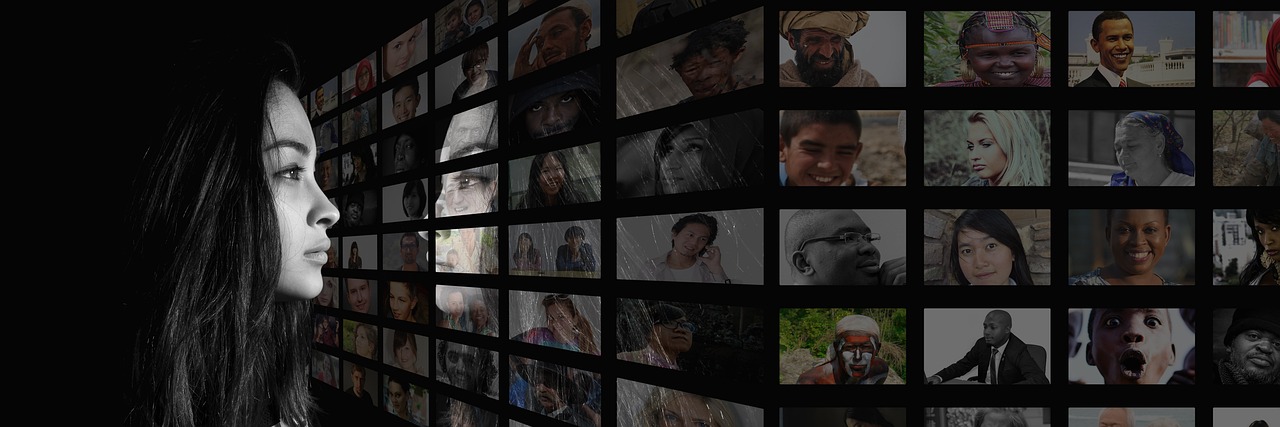
The Current State of Social Media Security
In today's digital age, social media platforms have become an integral part of our daily lives. However, with great connectivity comes great responsibility, particularly regarding security. Most popular social media platforms, such as Facebook, Twitter, and Instagram, have implemented various security measures to protect user data. These measures include encryption, account verification processes, and privacy settings. While these features are designed to enhance security, they are not foolproof and often have significant weaknesses.
For instance, many users may not fully understand the privacy settings available to them, leaving their accounts vulnerable to unauthorized access. Additionally, even with encryption, data breaches can still occur, exposing sensitive information to cybercriminals. A recent study showed that over 60% of social media users reported feeling concerned about their online security, highlighting the widespread anxiety surrounding these platforms.
| Platform | Security Features | Weaknesses |
|---|---|---|
| Two-factor authentication, encryption | Data sharing with third parties, complex privacy settings | |
| Login verification, account recovery | Phishing susceptibility, weak password policies | |
| Privacy controls, activity status | Account cloning, limited reporting tools |
Moreover, the rapid evolution of social media technology means that security measures must constantly adapt to new threats. Cybercriminals are becoming increasingly sophisticated, employing tactics like social engineering and malware to exploit vulnerabilities. For example, a recent phishing campaign targeted Instagram users by mimicking the platform's login page, tricking users into revealing their passwords. This highlights the necessity for both users and developers to stay informed about potential risks and the latest security practices.
In conclusion, while social media platforms have made strides in enhancing security, significant gaps remain. Users must take an active role in protecting their accounts by understanding the security features available to them and adopting best practices. As we continue to navigate the complex landscape of social media, it’s essential to remain vigilant and proactive in our approach to online security.

Common Security Threats Faced by Users
In today’s digital age, social media platforms have become an integral part of our daily lives. However, with this convenience comes a host of security threats that users must navigate. Understanding these threats is essential for safeguarding personal information and maintaining a secure online presence. One of the most prevalent issues is phishing, where cybercriminals impersonate legitimate entities to trick users into revealing sensitive information. But phishing is just the tip of the iceberg. Other significant threats include account hacking, where unauthorized individuals gain access to personal accounts, and data privacy issues, which can lead to the misuse of personal information.
Phishing attacks can be executed in various ways, often through deceptive messages that appear to come from trusted sources. For instance, a user might receive an email or message claiming to be from their favorite social media platform, urging them to click on a link to verify their account. Once clicked, these links can lead to fake login pages designed to capture usernames and passwords. This tactic shows how easily users can fall victim to such schemes if they are not vigilant.
Phishing attacks are not limited to just emails; they can also occur through social media messages, where cybercriminals send direct messages or comments with malicious links. These attacks often exploit users' trust and urgency, making them more likely to act without thinking. The consequences can be dire, ranging from identity theft to financial loss, which is why recognizing these threats is crucial.
So, how can users recognize phishing attempts? Here are some common signs to watch out for:
- Unusual Sender Addresses: Always check the sender’s email address or profile. If it looks suspicious or slightly different from a legitimate source, proceed with caution.
- Urgent Language: Phishing messages often create a sense of urgency, pressuring users to act quickly without thinking.
- Generic Greetings: Legitimate companies usually address you by your name. Be wary of messages that use generic greetings like "Dear User."
If you encounter a phishing scam, it’s vital to report it immediately. Most social media platforms have dedicated processes for reporting suspicious activity. By reporting these scams, users can help protect others in the community. Here’s a quick guide on how to report:
- Navigate to the help or support section of the platform.
- Find the option to report a phishing attempt or suspicious message.
- Provide any relevant details, including screenshots if possible.
Account hacking is another major concern. Cybercriminals often employ methods like password cracking and social engineering to gain unauthorized access to accounts. Password cracking involves using automated tools to guess passwords, while social engineering relies on manipulating users into revealing their credentials. The impact of account hacking can range from unauthorized posts to identity theft, making it crucial for users to take preventive measures seriously.
By understanding these common security threats, users can better equip themselves to navigate the social media landscape safely. Awareness is the first step in protecting personal information, and by staying informed about these dangers, users can enjoy their online experiences with greater peace of mind.
Q: What should I do if I think I've been a victim of phishing?
A: If you suspect you've fallen for a phishing scam, change your passwords immediately and enable two-factor authentication. Report the incident to the platform and monitor your accounts for any unusual activity.
Q: How can I create a strong password?
A: A strong password should be at least 12 characters long, combining uppercase letters, lowercase letters, numbers, and symbols. Avoid using easily guessable information like birthdays or common words.
Q: What is two-factor authentication and why is it important?
A: Two-factor authentication (2FA) adds an extra layer of security by requiring not just a password but also a second factor, like a text message code, to access your account. This makes it much harder for hackers to gain access.

Phishing Attacks
Phishing attacks have become a notorious method for cybercriminals seeking to exploit unsuspecting social media users. These attacks are often disguised as legitimate communications, tricking users into revealing sensitive information such as passwords, credit card numbers, or personal identification details. Imagine receiving a message that looks like it’s from your favorite social media platform, urging you to click a link to verify your account. What seems like a routine request can quickly lead to your account being compromised. The tactics employed by these cybercriminals are increasingly sophisticated, making it essential for users to stay vigilant.
Typically, phishing attacks on social media can be categorized into several types, including:
- Email Phishing: This involves sending fraudulent emails that appear to come from a trusted source, prompting users to click on malicious links.
- Social Media Phishing: Here, attackers create fake profiles or pages that mimic legitimate ones, enticing users to divulge personal information.
- SMS Phishing (Smishing): This variant uses text messages to lure users into clicking on links or providing sensitive data.
Recognizing the signs of phishing attempts is crucial for protecting oneself. Common indicators include:
- Unusual requests for personal information.
- Links that lead to unfamiliar websites.
- Poor grammar and spelling in messages.
Once you identify a phishing attempt, reporting it is equally important. Most social media platforms provide straightforward methods for users to report suspicious messages or accounts. By taking action, not only do you protect yourself, but you also contribute to the broader effort of keeping the social media community safe. Reporting can typically be done through the following steps:
- Navigate to the suspicious message or profile.
- Look for the 'Report' option, which is usually found in the settings or options menu.
- Follow the prompts to submit your report.
In conclusion, while phishing attacks pose significant risks to social media users, awareness and proactive measures can mitigate these threats. By understanding how these attacks work, recognizing their signs, and knowing how to report them, users can significantly enhance their security and protect their personal information from falling into the wrong hands.
Q: What should I do if I think I've been a victim of a phishing attack?
A: If you suspect you've been targeted, immediately change your passwords and enable two-factor authentication. Report the incident to the social media platform and monitor your accounts for any suspicious activity.
Q: How can I identify a phishing email?
A: Look for poor grammar, generic greetings, and mismatched URLs. Always hover over links to see the actual URL before clicking.
Q: Can I recover my account if it has been hacked?
A: Most social media platforms have recovery processes. Follow their guidelines to regain access, but act quickly to minimize potential damage.

Recognizing Phishing Attempts
Phishing attempts can be as sneaky as a cat stalking its prey. Cybercriminals are constantly devising new tactics to trick unsuspecting users into revealing sensitive information, making it crucial for you to be vigilant. So, how do you spot these deceptive schemes before they catch you off guard? Here are some key signs to look out for:
First off, pay attention to the sender's email address. Often, phishing emails come from addresses that look similar to legitimate ones but contain slight variations or misspellings. For example, instead of support@socialmedia.com, you might see support@socialmed1a.com. Always double-check the sender's information before clicking on any links.
Next, be wary of urgent language in messages. Phishing attempts often create a sense of urgency, prompting you to act quickly without thinking. You might receive a message claiming that your account will be suspended unless you verify your information immediately. If it feels rushed, take a step back and investigate further.
Another common tactic is the use of generic greetings. Legitimate companies usually address you by your name. If you receive a message that starts with "Dear Customer" or "Hello User," it could be a red flag. Phishing emails often target many users at once, so they may not have your personal details.
Moreover, examine the links carefully. Hover over any links without clicking on them to see the URL they lead to. If the link looks suspicious or doesn’t match the company’s official website, it’s a good idea to avoid it. Phishing links can redirect you to fake websites designed to steal your information.
Lastly, if the message prompts you to download attachments, proceed with caution. Legitimate organizations rarely send attachments unexpectedly. If you find yourself in doubt, consider reaching out to the company directly through their official channels rather than using the contact information provided in the suspicious message.
In summary, recognizing phishing attempts is about being aware and informed. By keeping these signs in mind, you can better protect yourself from falling victim to these malicious schemes. Remember, when in doubt, it’s always safer to verify than to regret!
- What should I do if I suspect a phishing attempt? If you think you've received a phishing email, do not click on any links or download attachments. Report the email to the relevant social media platform and delete it.
- Can I recover my account if I fall for a phishing scam? Yes, but it depends on the platform's recovery options. Immediately change your password and enable two-factor authentication if possible.
- How can I educate myself further about online security? Look for online resources, workshops, and webinars focused on cybersecurity. Staying informed is key to protecting yourself online.
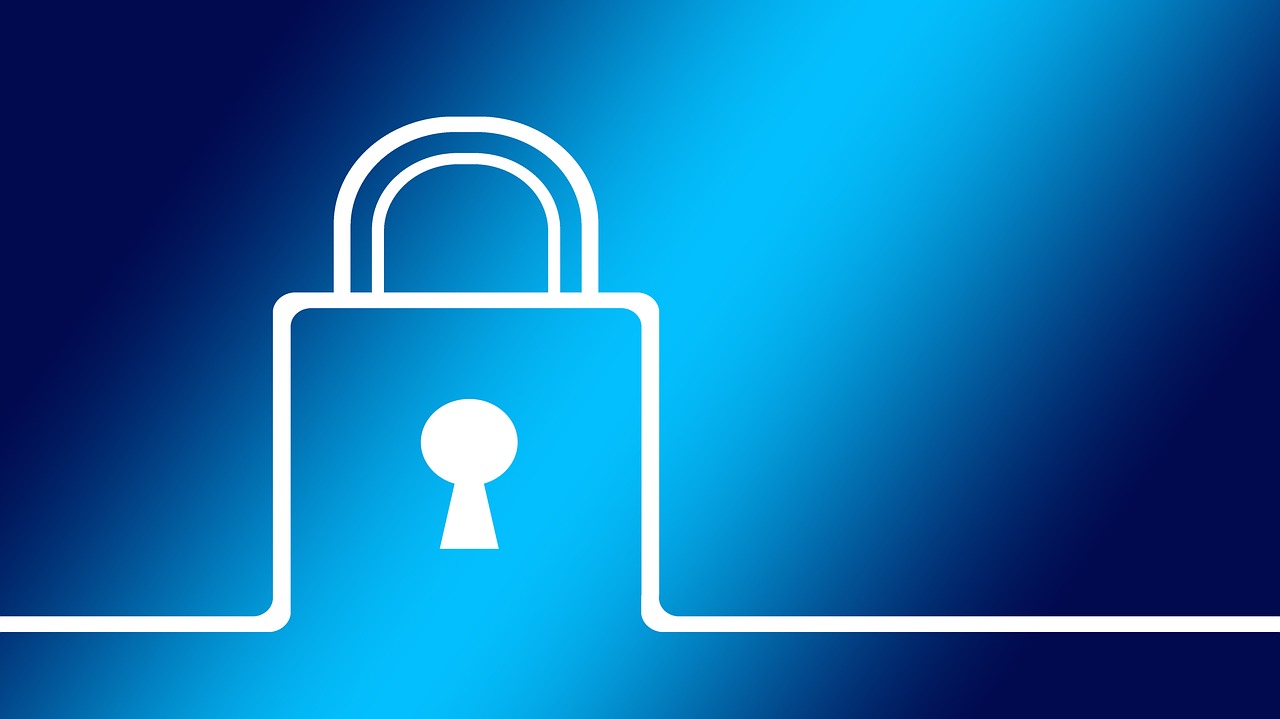
Reporting Phishing Scams
When you encounter a phishing scam on social media, it's crucial to take immediate action, not just for your own safety but for the protection of others as well. Reporting these scams helps social media platforms take necessary measures against cybercriminals and prevent further attacks. So, how do you go about reporting a phishing scam? It's simpler than you might think!
First, you need to gather all relevant information about the phishing attempt. This includes screenshots of the suspicious messages, links, or profiles involved. The more details you provide, the better the chances that the platform will take swift action. Most social media platforms have a dedicated reporting feature that allows users to report suspicious activity directly.
Here’s a quick guide on how to report phishing scams on popular social media platforms:
- Facebook: Click on the three dots on the top right of the suspicious post or message, select "Find Support or Report," and follow the prompts.
- Twitter: Click on the downward arrow on the tweet, select "Report Tweet," and choose the reason for the report.
- Instagram: Tap on the three dots above the post or message, select "Report," and then follow the instructions.
- LinkedIn: Click on the "More" button on the profile or post, then select "Report" and choose the appropriate option.
After reporting, keep an eye on your own account for any unusual activity. It's a good practice to change your password and enable two-factor authentication if you haven’t done so already. Remember, the sooner you report these scams, the quicker action can be taken. Together, we can create a safer online environment for everyone!
Q: What should I do if I accidentally clicked on a phishing link?
A: If you clicked on a phishing link, immediately change your password and monitor your account for any suspicious activity. It's also advisable to run a malware scan on your device.
Q: Can I report phishing attempts anonymously?
A: Yes, most platforms allow you to report phishing attempts without revealing your identity. Your report will be handled confidentially.
Q: How can I tell if a message is a phishing attempt?
A: Look for signs such as poor grammar, urgent language, and requests for personal information. If it seems too good to be true, it probably is!
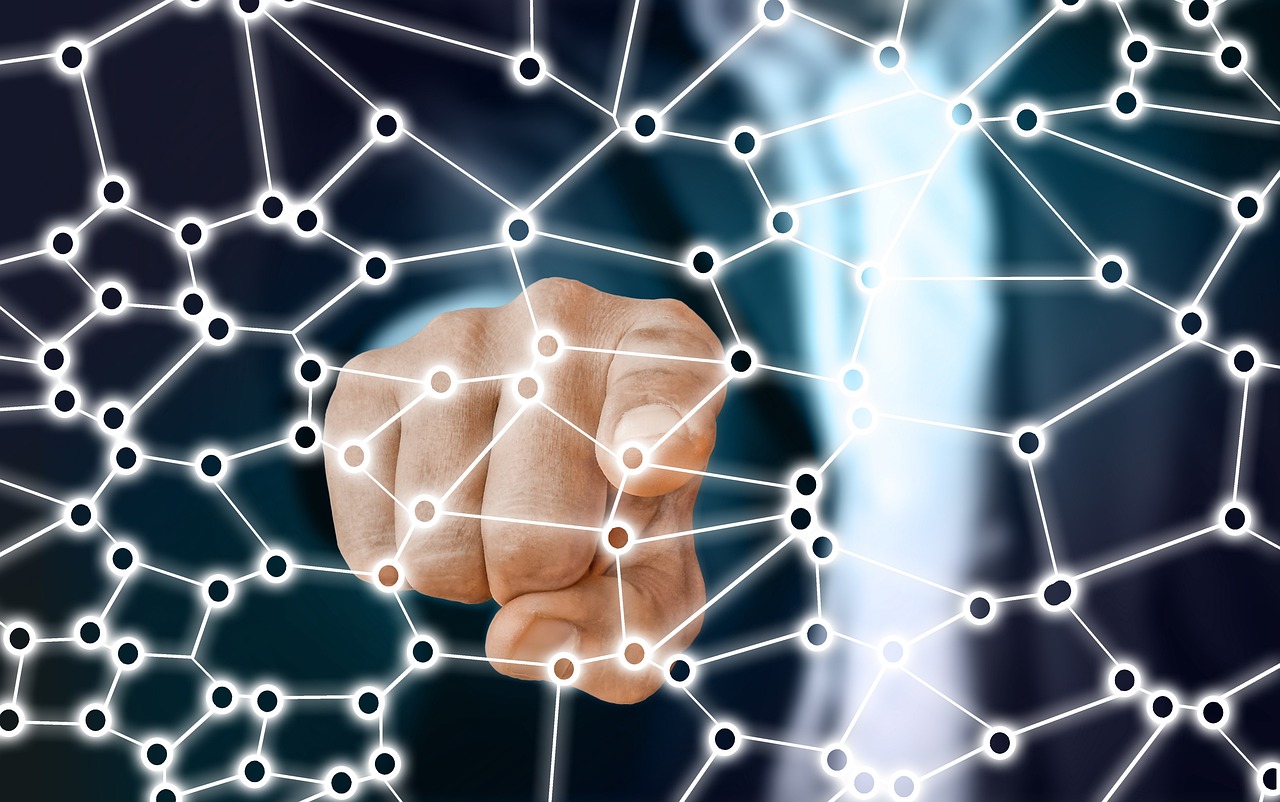
Account Hacking
Account hacking is a serious issue that many social media users face today. Imagine waking up one morning, excited to check your notifications, only to find that you can’t log in. Your heart races as you realize that someone else has taken control of your account. This scenario is all too common and can happen to anyone, regardless of how tech-savvy they think they are. Cybercriminals are constantly honing their methods, making it crucial for users to understand how these attacks occur and the potential consequences they can have.
So, how do these hackers gain access? One of the most popular methods is through password cracking. This involves using software that can guess your password by trying numerous combinations in a short amount of time. If your password is weak or easily guessable, such as “123456” or “password,” you’re setting yourself up for failure. Another common technique is social engineering, where hackers manipulate you into revealing your login credentials. They might impersonate a trusted friend or even a platform representative, convincing you to provide sensitive information.
Once hackers gain access to your account, the consequences can be devastating. They can post inappropriate content, send spam messages to your contacts, or even steal personal information that can be used for identity theft. In many cases, users may not even realize their accounts have been compromised until it’s too late. The emotional toll can be significant, leading to feelings of violation and anxiety as you scramble to regain control of your digital life.
To help illustrate the risks, consider the following table that outlines common methods hackers use to compromise social media accounts:
| Method | Description | Preventative Measures |
|---|---|---|
| Password Cracking | Using software to guess passwords through brute force. | Create strong, unique passwords and change them regularly. |
| Social Engineering | Manipulating users into revealing sensitive information. | Be cautious of unsolicited messages and verify identities. |
| Phishing | Sending fake messages that appear legitimate to steal information. | Check URLs and avoid clicking on suspicious links. |
As you can see, being aware of these tactics is the first step toward protecting yourself. The digital world is a minefield of potential threats, but with the right knowledge and tools, you can navigate it safely. Always stay vigilant and consider implementing additional security measures, such as enabling two-factor authentication, to add an extra layer of protection to your accounts.
- What should I do if my account has been hacked? Immediately change your password, enable two-factor authentication, and report the issue to the platform.
- How can I create a strong password? Use a mix of letters, numbers, and special characters, and avoid using easily guessable information.
- What is two-factor authentication? It’s an extra security step that requires not only a password but also a second form of verification, such as a text message code.

Best Practices for Enhancing Security
In today's digital landscape, where social media is an integral part of our lives, enhancing security is not just important—it's essential. As users, we must adopt best practices that can significantly reduce our vulnerability to threats. Think of your social media account as your digital home; just as you would lock your doors and install an alarm system, you need to implement security measures to protect your online presence. Here are some effective strategies you can adopt:
First and foremost, creating strong passwords is a non-negotiable step. A password should be more than just your pet's name or your birthday; it should be a complex combination of letters, numbers, and symbols. Ideally, your password should be at least 12 characters long. Consider using a password manager to help generate and store unique passwords for each of your accounts. This way, even if one account gets compromised, the others remain secure.
Another critical measure is enabling two-factor authentication (2FA). This adds a layer of security by requiring not only your password but also a second form of verification, such as a code sent to your phone. It’s like having a double lock on your door—just because someone has your key doesn’t mean they can easily get in. Most social media platforms offer this feature, and it’s a simple way to enhance your security significantly.
It's also important to regularly review your account settings. Social media platforms often update their privacy settings and security features. Take the time to familiarize yourself with these changes and adjust your settings accordingly. For instance, make sure your profile is set to private, and limit who can see your posts and personal information. This proactive approach can help shield you from unwanted attention.
Lastly, always be cautious about the information you share online. Think before you post; personal details like your location, phone number, or even your vacation plans can provide valuable information to cybercriminals. Practicing discretion in what you share can significantly reduce your risk of being targeted.
In summary, enhancing your social media security is a multifaceted approach that involves creating strong passwords, enabling two-factor authentication, regularly reviewing your account settings, and being mindful of the information you share. By adopting these best practices, you can safeguard your digital home from unwanted intrusions.
- What is the most important step to secure my social media account?
The most important step is to create a strong, unique password for each of your accounts and enable two-factor authentication.
- How often should I change my passwords?
It's recommended to change your passwords every three to six months, especially if you suspect any suspicious activity.
- Can I use the same password for multiple accounts?
No, using the same password increases the risk of multiple accounts being compromised if one is hacked.
- What should I do if I think my account has been hacked?
If you suspect your account has been hacked, change your password immediately, enable two-factor authentication, and report the incident to the platform.

Strong Passwords
When it comes to securing your social media accounts, are your first line of defense. Think of your password as the lock on your front door; if it's weak, anyone can waltz right in! A strong password not only protects your personal information but also serves as a deterrent against cybercriminals looking to exploit unsuspecting users. So, what exactly makes a password strong? For starters, a good password should be at least 12 characters long and include a mix of uppercase letters, lowercase letters, numbers, and special characters. This combination makes it significantly harder for hackers to crack your password using brute force attacks.
Moreover, it's essential to avoid using easily guessable information such as your name, birthday, or common words. Instead, consider using a passphrase—this is a sequence of random words strung together, making it easier for you to remember while remaining difficult for others to guess. For example, instead of using "password123," try something like "BlueSky!Dancing#Elephant." Not only is it much stronger, but it also paints a vivid picture in your mind, making it easier to recall.
Another crucial aspect of password security is the importance of uniqueness. Never reuse passwords across multiple social media platforms or accounts. If a hacker gains access to one account, they can easily try the same password on others. To help you manage your passwords effectively, consider using a password manager. These tools securely store your passwords and can even generate strong, random passwords for you. This way, you can focus on remembering just one master password, while the password manager takes care of the rest.
Here's a quick guide on creating strong passwords:
- Length: Aim for at least 12 characters.
- Complexity: Use a mix of letters, numbers, and symbols.
- Unpredictability: Avoid personal information and common words.
- Uniqueness: Use different passwords for different accounts.
In conclusion, investing a little time in creating and managing strong passwords can save you from significant headaches down the road. Remember, your social media accounts are gateways to your personal life, and a strong password is the key to keeping them secure!
Q1: How often should I change my passwords?
A1: It's a good practice to change your passwords every 3 to 6 months, especially if you suspect any unauthorized access. Regular updates can help keep your accounts secure.
Q2: What should I do if I forget my password?
A2: Most social media platforms have a "Forgot Password" option that allows you to reset your password through your email or phone number. Make sure to follow the instructions carefully.
Q3: Are password managers safe to use?
A3: Yes, reputable password managers use strong encryption to protect your data. Just ensure you choose a well-reviewed and trusted password manager to keep your information secure.
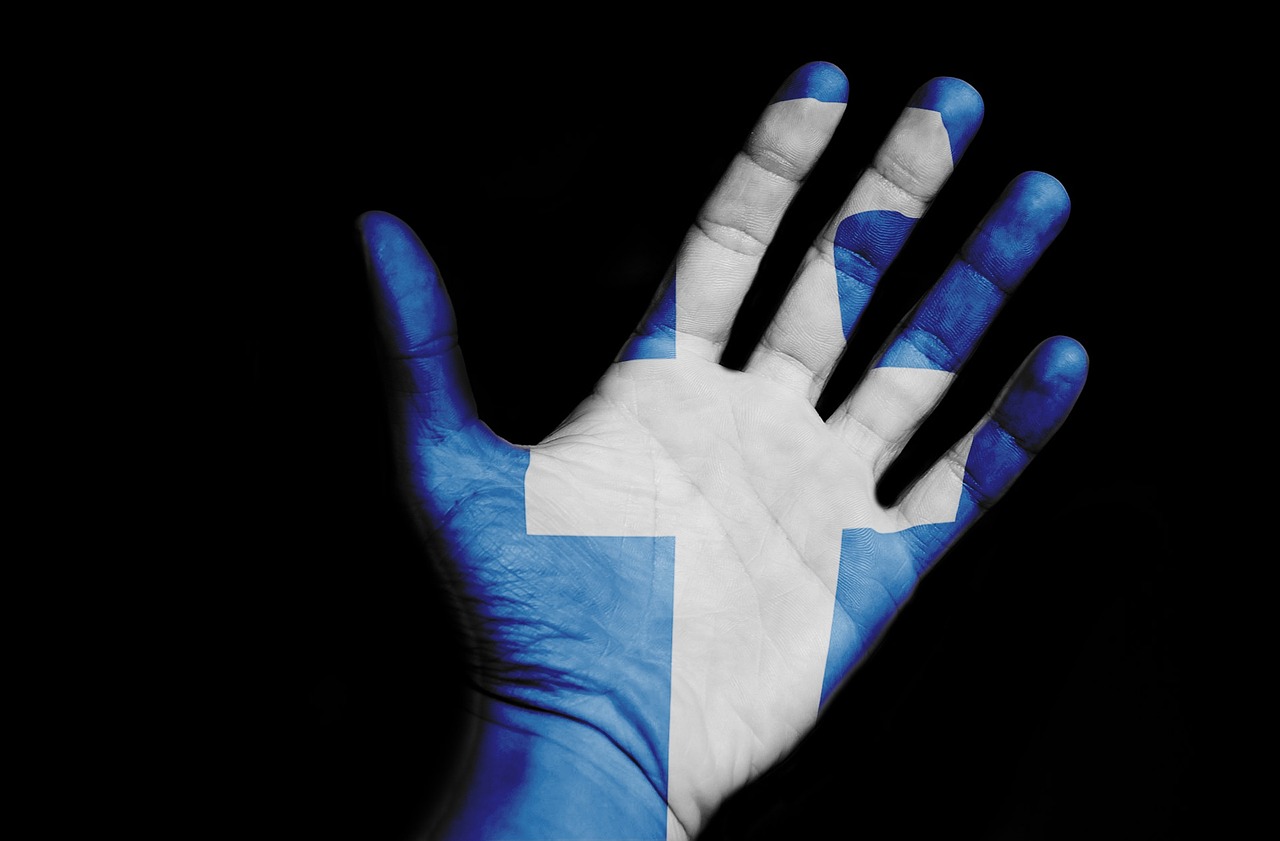
Two-Factor Authentication
Two-Factor Authentication (2FA) is like adding an extra lock to your front door; it makes it significantly harder for intruders to break in. In the digital realm, where social media accounts often hold a treasure trove of personal information, implementing 2FA is crucial for enhancing security. But what exactly is it? Simply put, 2FA requires not only a password and username but also something that only the user has on them—typically a mobile device or a security token. This means that even if someone manages to steal your password, they still can't access your account without that second form of verification.
The beauty of 2FA lies in its simplicity and effectiveness. When you enable it, after entering your password, you'll receive a code via SMS or an authenticator app. This code must then be entered to gain access to your account. It's a robust barrier against unauthorized access. According to recent studies, accounts with 2FA enabled are 99.9% less likely to be hacked. That’s a staggering statistic that highlights just how effective this security measure can be.
Setting up 2FA is typically straightforward. Most social media platforms have made it user-friendly. Here’s a quick rundown of the steps you might encounter when enabling 2FA on your favorite social media site:
- Go to your account settings.
- Find the security section.
- Select the option for Two-Factor Authentication.
- Choose your preferred method of receiving the verification code (SMS, app, etc.).
- Follow the prompts to complete the setup.
It's important to note that while 2FA significantly boosts your security, it’s not foolproof. Cybercriminals are constantly evolving their tactics. For instance, they may use phishing techniques to trick users into providing their 2FA codes. Therefore, it's essential to remain vigilant. Always verify the source of any communication requesting your verification code and be cautious about the links you click on.
In conclusion, enabling Two-Factor Authentication is one of the most effective ways to protect your social media accounts from unauthorized access. It adds a layer of security that not only deters potential hackers but also gives you peace of mind knowing that your personal information is better protected. So, if you haven’t already, make the switch today! Your future self will thank you for it.
Q: What is Two-Factor Authentication?
A: Two-Factor Authentication (2FA) is a security process that requires two different forms of identification before granting access to an account, usually a password and a code sent to your phone.
Q: Why should I use 2FA on my social media accounts?
A: 2FA significantly reduces the risk of unauthorized access, as it requires an additional verification step that a hacker would not have access to, even if they obtain your password.
Q: How do I set up 2FA?
A: You can set up 2FA by going to the security settings of your social media account and following the prompts to enable it. You may choose to receive codes via SMS or an authenticator app.
Q: What if I lose access to my phone?
A: Most platforms provide backup codes when you set up 2FA. Keep these in a safe place, as they can be used to access your account if you lose your phone.
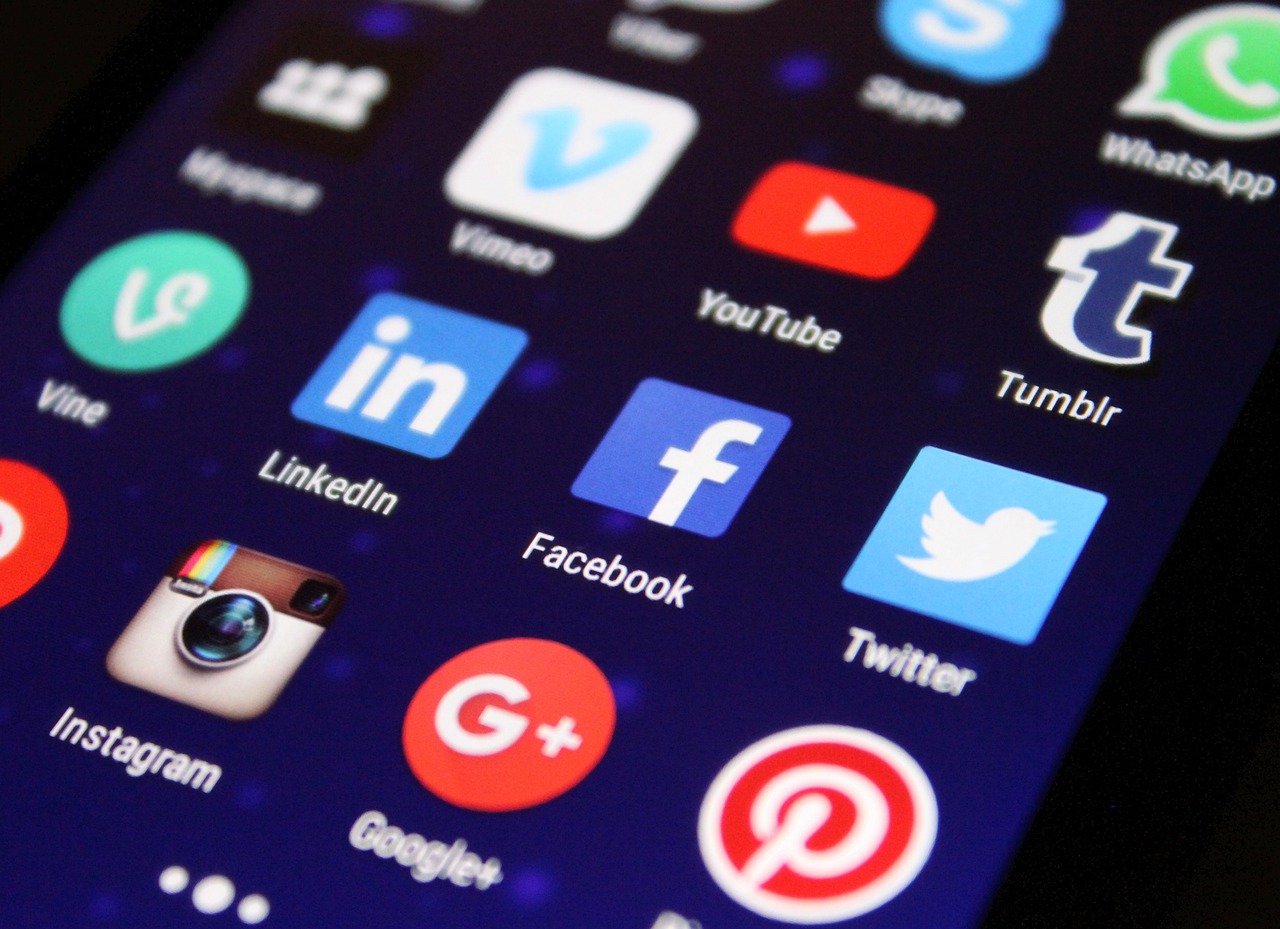
Innovative Security Solutions
In a world where social media has become a staple of daily communication, the need for enhanced security solutions has never been more critical. With the increasing sophistication of cyber threats, innovative approaches are essential to safeguard user data and privacy. One of the most promising advancements in this arena is the use of artificial intelligence (AI) and machine learning. These technologies are not just buzzwords; they are actively being integrated into social media platforms to detect and mitigate security threats in real-time. Imagine having a digital bodyguard that monitors your online presence 24/7, identifying suspicious activities before they escalate. This is the reality that AI can help create.
AI algorithms analyze vast amounts of data to recognize patterns indicative of potential threats. For example, if a user suddenly logs in from an unusual location or if there’s a rapid succession of password attempts, AI can flag these anomalies and alert both the user and the platform’s security team. This proactive approach not only helps in preventing breaches but also fosters a sense of security among users, knowing that their accounts are under constant surveillance.
Another innovative solution gaining traction is the implementation of user education programs. While technology plays a vital role in security, educating users about potential threats and safe practices is equally important. Social media companies are beginning to recognize the value of empowering their users through knowledge. Workshops, webinars, and online resources can provide valuable insights into recognizing phishing attempts, understanding privacy settings, and maintaining robust security practices. For instance, a simple tutorial on how to create a strong password can significantly reduce the risk of account hacking.
Moreover, the integration of gamification in user education can make learning about security more engaging. Platforms can create interactive quizzes or challenges that reward users for completing security training modules. This not only enhances user engagement but also reinforces the importance of security in a fun and memorable way.
To further illustrate the impact of these innovative solutions, let’s take a look at a table summarizing the key benefits of AI and user education in enhancing social media security:
| Innovative Solution | Benefits |
|---|---|
| AI and Machine Learning |
|
| User Education Programs |
|
In conclusion, the future of social media security lies in the fusion of advanced technology and user empowerment. By harnessing the power of AI and machine learning alongside comprehensive user education programs, social media platforms can create a safer online environment. As users, we must also take an active role in our security, leveraging the tools and knowledge provided to us to protect our digital lives. After all, a secure social media experience is not just the responsibility of the platforms but also of each individual user.
Q: What is AI's role in social media security?
A: AI helps in detecting and preventing security threats by analyzing user behavior and identifying anomalies in real-time.
Q: How can I protect myself from phishing attacks?
A: Be cautious of unsolicited messages, verify links before clicking, and never share personal information unless you're sure of the recipient's identity.
Q: What are user education programs?
A: These programs aim to inform users about security threats and safe practices through workshops, tutorials, and online resources.
Q: Why is a strong password important?
A: A strong password is crucial as it makes it harder for cybercriminals to gain unauthorized access to your accounts.

AI and Machine Learning
Artificial Intelligence (AI) and Machine Learning (ML) are revolutionizing the way we approach security, especially in the realm of social media. These technologies are not just buzzwords; they are powerful tools that help in identifying and mitigating security threats in real-time. Imagine having a digital watchdog that never sleeps, constantly monitoring for suspicious activities and flagging them before they escalate into serious breaches. That’s the promise of AI and ML in enhancing social media security.
One of the most significant advantages of AI is its ability to analyze vast amounts of data at lightning speed. Social media platforms generate enormous volumes of user interactions every second, making it nearly impossible for human moderators to keep up. Here’s where machine learning algorithms come into play. They can sift through this data, learn from patterns, and detect anomalies that could indicate malicious behavior. For instance, if a user suddenly starts sending an unusually high number of friend requests or messages in a short period, the system can flag this activity as suspicious.
Moreover, AI systems can continuously improve their detection capabilities. As they process more data, they refine their algorithms to recognize new threats and tactics used by cybercriminals. This self-learning aspect is akin to a student who becomes increasingly adept at a subject the more they study. Here are some specific ways AI and ML enhance security on social media:
- Real-time Threat Detection: AI can identify and respond to threats as they occur, minimizing potential damage.
- Fraud Prevention: Machine learning models can analyze user behavior to detect fraudulent accounts and activities.
- Content Moderation: AI tools can automatically filter out harmful content, reducing the burden on human moderators.
However, it's important to note that while AI and ML offer substantial benefits, they are not foolproof. Cybercriminals are also becoming more sophisticated, often finding ways to bypass automated systems. This creates a continuous arms race between security technologies and those who would exploit vulnerabilities. Therefore, social media platforms must invest in not just AI and ML, but also in user education and awareness, ensuring that users are equipped with the knowledge to recognize potential threats themselves.
In conclusion, AI and Machine Learning are critical components of a modern security strategy for social media platforms. By harnessing these technologies, companies can create a safer environment for users, reducing the risk of breaches and enhancing trust in their services. As these technologies evolve, so too will the strategies employed by cybercriminals, making it essential for social media companies to stay one step ahead.
Q: How does AI help in social media security?
A: AI helps by analyzing user behavior, detecting anomalies, and flagging suspicious activities in real-time, thereby preventing potential security breaches.
Q: Are AI and ML systems foolproof?
A: No, while they significantly enhance security, they are not infallible. Cybercriminals continuously adapt, which means security measures must also evolve.
Q: What should users do to enhance their security on social media?
A: Users should employ strong, unique passwords, enable two-factor authentication, and stay informed about potential threats, including phishing and account hacking.
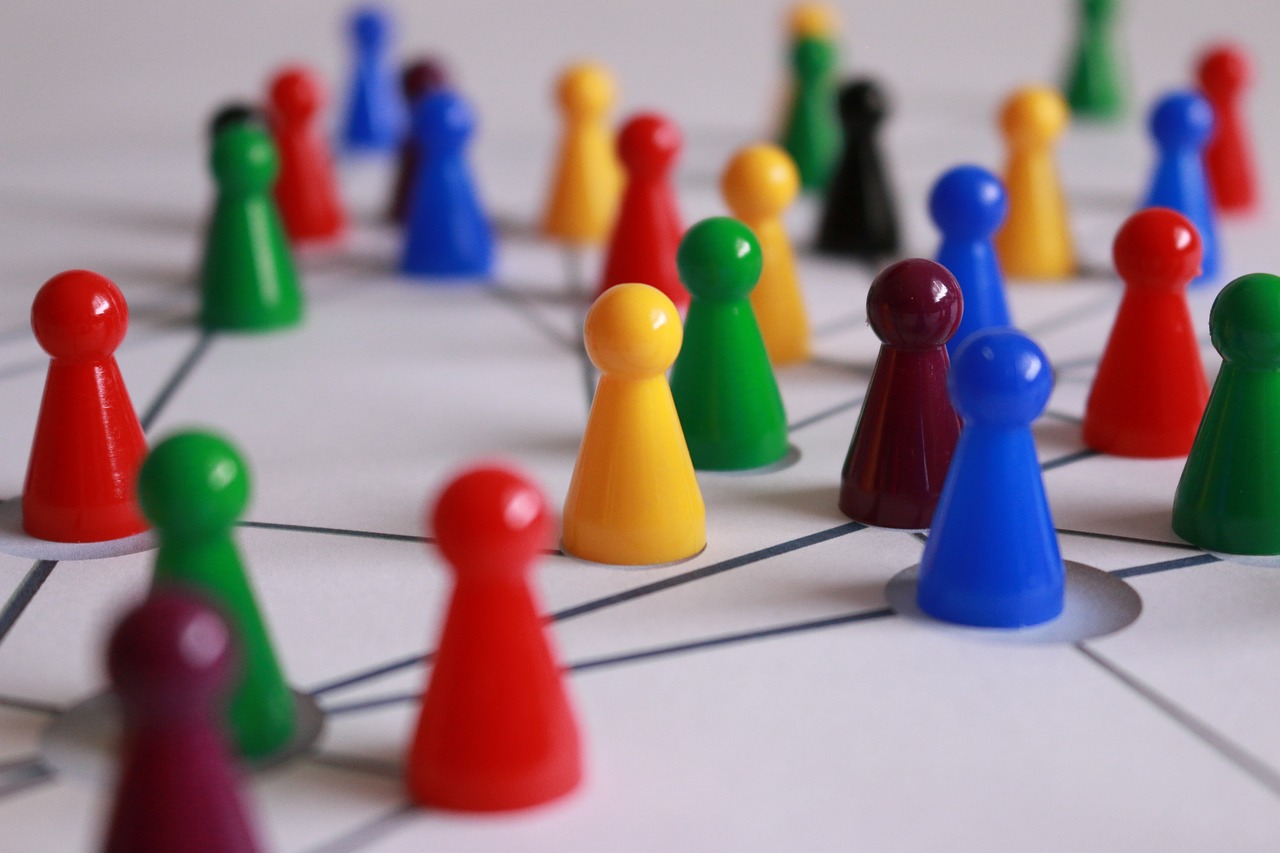
User Education Programs
User education programs are becoming increasingly vital in the fight against security threats on social media. As the digital landscape evolves, so do the tactics employed by cybercriminals. Therefore, it's crucial for users to stay informed about the latest threats and how to protect themselves. Think of user education as the armor that shields you from the arrows of online predators. By understanding the risks and knowing how to navigate the social media terrain, users can significantly reduce their chances of falling victim to scams, phishing attempts, and account hacks.
Many organizations and social media platforms are stepping up to provide educational resources. These programs often include workshops, webinars, and online courses designed to teach users about security best practices. For instance, a workshop might cover topics such as:
- Identifying phishing attempts
- Creating strong passwords
- Understanding privacy settings
- Recognizing the signs of account hacking
Moreover, online resources such as blogs, tutorials, and videos can serve as ongoing learning tools for users. Social media platforms can also integrate educational pop-ups or tips directly into their interfaces, reminding users to review their security settings or alerting them to suspicious activities. This proactive approach can empower users to take control of their online safety.
In addition to formal programs, peer-to-peer education can be incredibly effective. Users sharing their experiences and knowledge with friends and family can create a ripple effect, spreading awareness throughout communities. Just as you might warn a friend about a dangerous road, sharing information about online threats can help protect those you care about.
Ultimately, the goal of user education programs is to foster a culture of security awareness. When users are informed and vigilant, they become the first line of defense against cyber threats. As we continue to navigate the complexities of social media, investing in education is not just beneficial—it's essential for creating a safer online environment for everyone.
Q1: What are user education programs?
User education programs are initiatives designed to inform and train users about security threats and best practices for protecting their online accounts and personal information.
Q2: How can I participate in user education programs?
You can participate by attending workshops, webinars, or accessing online resources provided by social media platforms or cybersecurity organizations. Many platforms also offer tips and tutorials directly on their sites.
Q3: Why is user education important for social media security?
User education is crucial because it empowers individuals to recognize and respond to security threats, reducing the likelihood of falling victim to scams and attacks.
Q4: Are there any costs associated with user education programs?
Many user education programs are free, especially those offered by social media platforms or non-profit organizations. However, some specialized courses may charge a fee.
Q5: How can I share what I learn about social media security?
You can share your knowledge by discussing it with friends and family, posting about it on your social media accounts, or even organizing informal meetups to educate others.

The Role of Social Media Companies
In today's digital age, social media companies hold a significant responsibility when it comes to safeguarding user security. With millions of users sharing personal information daily, these platforms must prioritize the protection of that data. The role of social media companies extends beyond simply providing a space for interaction; they are also custodians of sensitive information, making it crucial for them to implement robust security measures.
First and foremost, social media companies need to establish clear policies regarding data protection. This involves not only protecting user data from breaches but also being transparent about how that data is collected, used, and shared. Transparency helps build trust between the platform and its users, which is essential in an environment rife with skepticism regarding data handling practices. Users should feel confident that their information is being treated with respect and that they have control over their privacy settings.
Furthermore, regular security updates are vital in the ever-evolving landscape of cyber threats. Social media platforms must consistently monitor for vulnerabilities and apply necessary patches to ensure their systems remain secure. This proactive approach can significantly reduce the risk of data breaches and account hacks. For instance, consider a situation where a platform neglects to update its security measures. This oversight could lead to a catastrophic data breach, compromising the personal information of millions of users. Hence, a commitment to regular updates is not just beneficial; it is essential.
To illustrate the importance of security updates, here’s a simple table that highlights the potential risks of neglecting this responsibility:
| Neglected Security Updates | Potential Risks |
|---|---|
| Outdated software | Increased vulnerability to attacks |
| Unpatched security flaws | Data breaches and leaks |
| Lack of user awareness | Higher susceptibility to phishing and scams |
Moreover, social media companies should invest in user education programs. By equipping users with knowledge about potential threats and safe practices, they can empower individuals to take charge of their own security. Workshops, webinars, and easily accessible online resources can make a significant difference. After all, a well-informed user is less likely to fall victim to scams or breaches. Companies can create a culture of security awareness that not only protects their users but also enhances their own reputation.
In conclusion, the role of social media companies in ensuring user security is multifaceted and critical. From establishing transparent data protection policies to committing to regular security updates and fostering user education, these platforms must take a proactive stance. By doing so, they can create a safer online environment for everyone, ultimately enhancing user trust and engagement.
- What are the main responsibilities of social media companies regarding user security?
Social media companies are responsible for safeguarding user data, implementing security measures, and ensuring transparency in data handling practices. - How often should social media platforms update their security measures?
Regular updates are essential, and companies should implement them as new vulnerabilities are discovered or as technology evolves. - What can users do to enhance their security on social media?
Users can create strong passwords, enable two-factor authentication, and stay informed about potential security threats.

Transparency in Data Handling
In today's digital age, where information flows freely and rapidly, has become an essential pillar for building trust between social media companies and their users. When users engage with platforms like Facebook, Twitter, or Instagram, they often share a wealth of personal information, from their location to their interests. This data, if mishandled, can lead to severe privacy breaches and a loss of trust. Therefore, it is crucial for social media companies to be open about how they collect, use, and protect user data.
Transparency goes beyond just telling users what data is collected; it involves clear communication about the processes and intentions behind data usage. For instance, if a social media platform uses algorithms to suggest friends or advertisements based on user data, they should disclose how these algorithms work and what data influences their decisions. This kind of openness not only empowers users but also encourages them to make informed choices about their privacy settings.
Moreover, social media companies can enhance transparency by providing users with easy access to their data. This could be achieved through features that allow users to view what data is stored about them, how it has been used, and how they can manage or delete this information. Here are some key aspects that highlight the importance of transparency:
- Building Trust: When users feel that their data is handled with care and clarity, they are more likely to trust the platform, leading to increased user engagement and loyalty.
- Accountability: Transparency holds companies accountable for their data practices, making it harder for them to exploit user data for unethical purposes.
- Informed Consent: Users should be able to give informed consent regarding their data. This means understanding what they are agreeing to when they accept terms and conditions.
To illustrate this, consider the following table that summarizes the key elements of transparency in data handling:
| Element | Description |
|---|---|
| Data Collection | Clear information on what data is collected from users. |
| Data Usage | Explanations on how user data is used, including advertising and algorithmic decisions. |
| User Control | Options for users to manage their data, including viewing, editing, or deleting it. |
| Security Measures | Details about the security protocols in place to protect user data. |
Ultimately, transparency in data handling is not just a regulatory requirement; it is a fundamental aspect of user experience that can significantly influence a platform's reputation. By prioritizing transparency, social media companies can foster a safer and more trustworthy environment for their users, encouraging them to engage more freely without the fear of their data being misused.
Q1: Why is transparency in data handling important?
A1: Transparency is crucial as it builds trust between users and social media companies, ensuring users feel safe about how their data is handled.
Q2: How can I know what data a social media company collects about me?
A2: Most platforms provide privacy settings where you can view and manage your data. Look for sections labeled "Privacy" or "Data Settings."
Q3: What should I do if I feel my data is being misused?
A3: You should report your concerns directly to the platform's support team and consider adjusting your privacy settings to limit data sharing.
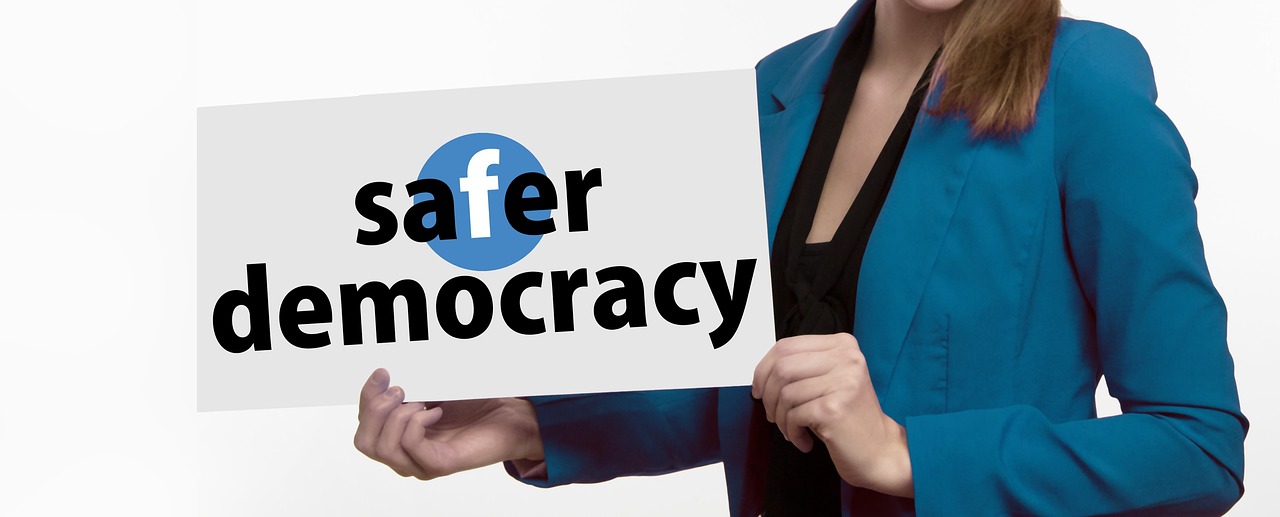
Regular Security Updates
In the ever-evolving landscape of social media, are not just a luxury; they are a necessity. As cyber threats become more sophisticated, social media platforms must stay one step ahead to protect user data. Think of it like maintaining a car: if you skip regular oil changes or ignore warning lights, you risk a breakdown. Similarly, neglecting security updates can lead to vulnerabilities that hackers can exploit.
Social media companies are tasked with the critical responsibility of safeguarding user information. This involves not only implementing security measures but also constantly updating their systems to address new threats. Regular updates can include patches for known vulnerabilities, enhancements to existing security features, and the introduction of new technologies designed to thwart potential attacks. For instance, when a new type of phishing scam emerges, platforms must quickly adapt their defenses to counteract these threats effectively.
Moreover, the process of rolling out these updates should be transparent. Users deserve to know what changes are being made and how these updates will enhance their security. This transparency fosters trust, which is crucial in maintaining a loyal user base. When users feel secure, they are more likely to engage with the platform and share their personal information, which ultimately benefits the social media company.
Here are some key aspects of why regular security updates are essential:
- Immediate Threat Response: Quick updates can mitigate risks associated with newly discovered vulnerabilities.
- User Awareness: Informing users about updates can help them understand the importance of security and encourage them to adopt safer practices.
- Compliance with Regulations: Many regions have strict data protection laws that require companies to implement timely security measures.
In conclusion, regular security updates are a fundamental aspect of social media security. They not only protect users but also enhance the credibility of social media platforms. By prioritizing these updates, companies can create a safer online environment, fostering trust and loyalty among their users. So, the next time you see a notification about an update, remember that it’s not just a routine task; it’s a crucial step towards a more secure social media experience.
Q: Why are regular security updates important for social media platforms?
A: Regular security updates are crucial as they help protect user data from emerging threats and vulnerabilities, ensuring a safer online environment.
Q: How can users know if their social media platform has implemented security updates?
A: Social media platforms typically notify users through alerts, blog posts, or newsletters when significant updates are made regarding security measures.
Q: What should I do if I suspect my account has been compromised?
A: If you suspect your account has been compromised, immediately change your password, enable two-factor authentication, and report the issue to the platform.
Frequently Asked Questions
- What are the common security threats on social media?
Common security threats on social media include phishing attacks, account hacking, and data privacy issues. These threats can lead to unauthorized access to personal information, financial loss, and even identity theft, making it essential for users to stay informed and vigilant.
- How can I recognize phishing attempts?
Recognizing phishing attempts involves looking out for suspicious messages or links, unexpected requests for personal information, and poor grammar or spelling in communications. Always verify the sender's identity before clicking on links or providing any sensitive data.
- What should I do if I encounter a phishing scam?
If you encounter a phishing scam, report it immediately to the social media platform. Most platforms have a reporting feature that allows you to flag suspicious content, helping to protect yourself and other users from potential harm.
- How can I enhance the security of my social media accounts?
Enhancing the security of your social media accounts can be achieved by using strong, unique passwords, enabling two-factor authentication (2FA), and regularly reviewing your privacy settings. These practices significantly lower the risk of unauthorized access.
- What is two-factor authentication and why is it important?
Two-factor authentication (2FA) is an added layer of security that requires not only a password but also a second form of verification, like a text message code. This makes it much harder for hackers to gain access to your account, even if they have your password.
- How do social media companies ensure user security?
Social media companies ensure user security by implementing robust security measures, conducting regular updates, and maintaining transparency in data handling. They also invest in innovative technologies, such as AI, to detect and prevent security threats in real-time.
- What role does user education play in social media security?
User education is crucial for promoting safer practices on social media. Through workshops, online resources, and awareness campaigns, users can learn about potential risks and how to protect themselves, creating a more secure online environment for everyone.
- How can I create a strong password for my social media accounts?
To create a strong password, use a mix of uppercase and lowercase letters, numbers, and special characters. Avoid using easily guessable information like birthdays or common words. Consider using a password manager to generate and store complex passwords securely.
- What should I do if my account has been hacked?
If your account has been hacked, immediately change your password and enable two-factor authentication if you haven't already. Notify the social media platform and check for any unauthorized changes to your account. It's also wise to inform your contacts, as they may receive suspicious messages from your account.



















